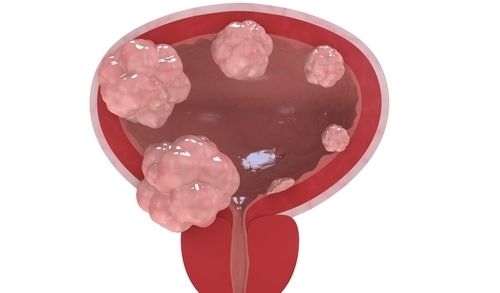Transurethral resection of bladder tumor (TURBT) is a medical procedure that is used to remove tumors from the surface of the bladder wall. The bladder is accessed through the urethra, the tube that carries urine out of the body from the bladder. TURBT is an alternative to open surgery, during which a large incision is made in the belly in order to reach the bladder.
The TURBT Procedure
After anesthesia is given, a resectoscope (an instrument with a telescope and small, electrified wire loop) is inserted into the urethra until it reaches the bladder. The telescope allows the doctor to examine the inside of the bladder for signs of tumors or lesions. If present, the metal loop can be used to cut and remove them.
The resectoscope may also be used to take samples (biopsy) of the tumor, as well as a portion of the healthy-looking tissue inside the bladder. These samples will be examined under a microscope to look for bladder cancer cells, and to determine how advanced or aggressive the cancer is.
TURBT, which is done using either regional or general anesthesia, takes about an hour. It is usually performed as an outpatient procedure in a hospital. An overnight stay of 1 to 3 days, however, may be required for some.
This procedure is not ideal for those with large and aggressive bladder tumors, or for those who have had recurring tumors. Instead, other cancer treatments like chemotherapy will likely be recommended.
TURBT Recovery & Complications
After the procedure, a flexible tube (catheter) may be inserted into the bladder through the urethra to assist with draining urine from the bladder. The catheter will usually stay in place for 1 to 3 days. For a few days after the catheter is removed, the patient may have difficulty controlling their urine. This should improve on its own.
Although no incision is made in the belly, TURBT is still considered a major surgery. To speed up recovery, the patient should plan on resting for a few days after the procedure. This includes avoiding stressful physical activities.
Overexertion can cause bleeding inside the bladder. Some blood in the urine, however, is normal. If this does not clear up after several days, or if urination continues to be difficult or blood clots are present in the urine, a physician should be contacted immediately. It is also normal to notice a couple of days of bloody urine again 10 to 14 days after surgery.
Antibiotics may be prescribed to prevent infections, including those of the urinary tract. If so, it is important to take them as directed in order to prevent a recurrent infection.
Other complications of TURBT are:
- Perforation of the bladder wall
- Pain and stinging in the lower urinary tract
- Burning while urinating
Outcome and Prognosis
It is not always possible to remove the entire bladder tumor. In addition, if the tumor has spread into the muscle of the bladder, or nearby lymph nodes and tissues, more intensive surgery or other treatments—such as chemotherapy or radiation therapy—may be required.
In some cases, a second TURBT may be done 2 to 6 weeks later, such as when the bladder tumor was not completely removed the first time, or for more advanced tumors.
TURBT is most successful for patients with small, single tumors that have not spread to other tissues. Success rates in these cases is around 60 to 70 percent.
References
National Comprehensive Cancer Network. (2012). National Comprehensive Cancer Network Clinical Practice Guidelines in Oncology: Bladder Cancer, Including Upper Tract Tumors and Urothelial Carcinoma of the Prostate.
Bajorin D. (2011). Tumors of the kidney, bladder, ureters, and renal pelvis. Cecil Medicine, 24th ed.
Solsona E, Iborra I, Collado A, et al. (2010). Feasibility of radical transurethral resection as monotherapy for selected patients with muscle invasive bladder cancer. J Urol 184(2):475–480.


